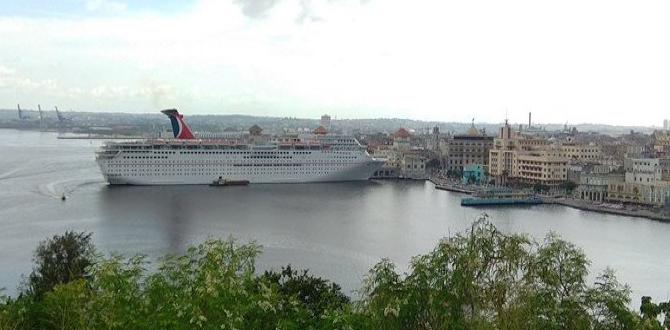Bhutan offers surprisingly many free activities for budget-conscious travelers, allowing you to experience its rich culture and stunning landscapes without spending a fortune. Explore ancient monasteries, hike scenic trails, and immerse yourself in local life for free.
Bhutan, the Land of the Thunder Dragon, is often perceived as an exclusive destination due to its high daily tariff for tourists. However, for those eager to explore its magic without breaking the bank, there are indeed wonderful ways to enjoy Bhutan without constant spending. While the mandatory Sustainable Development Fee (SDF) applies to most tourists, many of the most profound and memorable experiences in Bhutan come at no additional cost. This guide will help you discover the hidden gems and free activities that make Bhutan a truly special place to visit. We’ll walk you through how to make the most of your trip, focusing on authentic experiences that don’t require a hefty price tag.
Your Essential Guide to Free Things to Do in Bhutan
Bhutan’s charm lies not just in its grand dzongs and monasteries, but also in its breathtaking natural beauty and vibrant local culture that are accessible to everyone. Understanding where to focus your efforts can unlock a richer, more fulfilling travel experience.
Embracing Bhutan’s Spiritual Heart: Free Monasteries and Temples
Bhutan is a deeply spiritual country, and its monasteries and temples are central to its identity. While some might have entrance fees or require donations, many offer a space for quiet contemplation and observation that is entirely free.
Trekking to Tiger’s Nest Monastery (Taktsang Palphug Monastery) – A Journey Worth the Effort
While the trek itself is free, reaching the famous Tiger’s Nest Monastery is a highlight of any Bhutanese adventure. The hike is strenuous but incredibly rewarding, offering unparalleled views of the monastery clinging to a cliffside.
The Hike: The trail winds through pine forests adorned with prayer flags. The air is crisp, and the sounds of nature are your only companions.
Viewpoints: There are several points along the trail where you can rest and admire the iconic structure from afar. The teahouse halfway up is a popular spot for a break and stunning photo opportunities.
Spiritual Significance: Legend has it that Guru Rinpoche flew here on the back of a tigress in the 8th century. Visiting this sacred site offers a profound sense of peace.
What to Bring: Comfortable walking shoes are essential. Carry water and snacks. The trek can take 4-5 hours round trip.
Paro Dzong (Rinpung Dzong) – A Glimpse into Bhutanese Architecture
This magnificent fortress-monastery, often referred to as “the jewel on the crown of the Bhutanese,” is a prime example of Bhutanese architecture. While the primary purpose of your visit might involve cultural understanding, simply walking around its courtyards and admiring the craftsmanship is a free activity.
Architectural Marvel: Observe the intricate woodwork, colorful murals, and the sheer scale of the structure.
Cultural Immersion: You might witness monks in prayer or students attending religious classes, offering a glimpse into daily monastic life.
Photography: The dzong offers stunning photographic opportunities, especially during sunrise or sunset.
Kyichu Lhakhang – One of Bhutan’s Oldest Temples
Located in Paro Valley, Kyichu Lhakhang is one of the oldest and most sacred temples in Bhutan, believed to have been built in the 7th century. It’s a place of immense peace and spiritual energy.
Ancient Significance: Constructed to subdue a giant demoness, this temple holds deep historical and religious importance.
The Atmosphere: The tranquil surroundings and the presence of devout pilgrims create a serene environment.
Devotional Practice: You can observe locals circumambulating the temple, spinning prayer wheels, and making offerings.
Buddha Dordenma – The Giant Buddha Statue (Thimphu)
Perched on a hilltop overlooking the Thimphu Valley, the giant Buddha Dordenma statue is an impressive sight. The statue itself, made of bronze and gilded in gold, houses thousands of smaller Buddha statues within its base.
Panoramic Views: The location offers breathtaking panoramic views of the Thimphu Valley.
Spiritual Serenity: The sheer size and peaceful aura of the statue are awe-inspiring.
Symbol of Peace: It was built to celebrate the 60th anniversary of the fourth King of Bhutan and symbolizes peace and prosperity.
Exploring the Natural Wonders of Bhutan for Free
Bhutan’s commitment to environmental conservation means its natural landscapes are pristine and accessible for exploration. Hiking, walking, and simply enjoying the scenery are abundant free pastimes.
Hikes and Nature Walks Around Thimphu
The capital city, Thimphu, is surrounded by hills that are crisscrossed with walking trails. These offer a refreshing escape from the town and a chance to connect with nature.
Bajo Road Hike to Cheri Monastery: This moderately challenging hike leads to Cheri Monastery, a beautiful and secluded spiritual site. The walk through the forest is serene.
Wangditse Nature Trail: This relatively easy trail offers lovely views of Thimphu city and the surrounding valleys. It’s a great option for a leisurely stroll.
Local Flora and Fauna: Keep an eye out for diverse bird species and the unique Bhutanese flora as you walk.
Riverside Walks and Picnics
Many towns and valleys in Bhutan are graced by pristine rivers. Strolling along their banks or finding a scenic spot for a picnic is a delightful, free way to experience Bhutan.
Paro Chhu (Paro River): The banks of the Paro Chhu offer picturesque walking paths with views of rice paddies and traditional farmhouses.
Thimphu Chhu (Thimphu River): Enjoy a peaceful walk along the Thimphu Chhu, especially near the Changangkha Lhakhang area.
Picnic Essentials: Pack some local snacks or fruits from a market for a budget-friendly and memorable meal amidst nature.
Bhutanese Village Exploration
Wandering through traditional Bhutanese villages offers an authentic glimpse into the daily lives of the Bhutanese people. You’ll see well-maintained farmhouses, children playing, and a pace of life that is refreshingly unhurried.
Observe Architecture: Admire the unique wooden architecture of the farmhouses, often decorated with intricate paintings.
Local Interactions: Engage in polite conversation (if opportunities arise) and observe the community spirit.
Scenery: Villages are often set against stunning rural backdrops, making every walk a scenic experience.
Cultural Experiences That Cost Nothing
Beyond the iconic landmarks, Bhutan’s culture is lived and breathed by its people. Engaging with this culture, even passively, can be incredibly enriching and is often free.
Witnessing Local Markets (Weekend Markets)
If your visit coincides with a weekend, immerse yourself in the local market scene. These bustling hubs are where locals gather to sell produce, handicrafts, and traditional goods.
Vibrant Atmosphere: Experience the sights, sounds, and smells of a local Bhutanese market.
Observe Local Life: See what kind of produce people buy, how they interact, and the general buzz of community commerce.
Photography Opportunities: The colorful produce and people make for excellent candid photography. (Always ask permission before photographing individuals).
Visiting Local Tshering (Community Centers/Gathering Spots)
In many villages, you’ll find open spaces or small structures where locals gather, especially in the evenings. While not formal tourist attractions, these are places where community life unfolds.
Observe Social Habits: You might see elders playing traditional games or people simply chatting.
Cultural Insight: This offers a genuine, unfiltered look into the social fabric of Bhutan.
Respectful Observation: Maintain a respectful distance and observe without intruding.
Strolling Through Local Towns and Streets
Simply walking through towns like Thimphu, Paro, Punakha, or Bumthang allows you to soak in the unique atmosphere. Observe the blend of tradition and modernity, and the distinct Bhutanese architectural style.
Architectural Appreciation: Notice the intricate designs on buildings, the prayer flags, and the unique window styles.
People Watching: Observe the Bhutanese in their traditional attire (Gho for men, Kira for women).
Local Shops: Peek into local handicraft shops or small eateries to get a feel for local products and life.
Exploring the National Memorial Chorten (Thimphu)
The National Memorial Chorten in Thimphu is a prominent landmark and a place of daily worship for many Bhutanese. While it’s a place of reverence, observing the devotees and the serene atmosphere is a free cultural experience.
Devotional Practices: Witness locals circumambulating the chorten, spinning prayer wheels and reciting mantras.
Peaceful Ambiance: Despite being a place of activity, the chorten exudes a profound sense of peace.
Architectural Significance: The chorten itself is a beautiful example of Bhutanese Buddhist architecture.
Tips for Maximizing Your Free Bhutan Experience
Making the most of Bhutan’s free attractions requires a bit of planning and an open mind. Here are some actionable tips.
Embrace Guesthouses and Homestays
While hotels offer certain comforts, opting for guesthouses or homestays can significantly enrich your experience and is often more budget-friendly. These accommodations often double as cultural immersion opportunities.
Local Interaction: You’ll often eat with the host family, giving you a chance to learn about their lives and customs.
Home-Cooked Meals: Enjoy authentic Bhutanese cuisine prepared with local ingredients.
Insider Tips: Your hosts can often provide valuable advice on local sights and free activities you might not find in guidebooks.
Utilize Public Transportation (Where Available and Practical)
Bhutan’s public transportation system is limited but can be a great way to see the country affordably. Local buses connect major towns and rural areas.
Inter-District Buses: These are the most common form of public transport for longer distances.
Local Buses: Within towns like Thimphu, local buses are very cheap and efficient for getting around.
Flexibility: While less flexible than private transport, buses offer a chance to interact with local commuters.
The Bhutan Tourism website often has updated information on internal travel.
Pack Essentials to Avoid On-the-Go Purchases
Being prepared with your own essentials can save you money and hassle. This includes personal care items, basic medications, and even snacks.
Comfortable Footwear: Crucial for all the walking and hiking you’ll be doing.
Reusable Water Bottle: Stay hydrated and reduce plastic waste. Many places offer refills.
Snacks: While you can buy local snacks, having some familiar comfort items can be helpful, especially if you have dietary preferences or travel with children. For parents managing travel with kids, packing age-appropriate snacks can be a lifesaver. Consider items like granola bars or dried fruit. For adults who might need extra reassurance or convenience, especially on long journeys, traveling with discreet personal care items like adult diapers can provide peace of mind. Brands offering highly absorbent and comfortable options can make long flights or bus rides much more pleasant, ensuring you can focus on the sights rather than discomfort.
Basic First-Aid Kit: Include bandages, antiseptic wipes, pain relievers, and any personal medications.
Learn a Few Basic Dzongkha Phrases
While English is widely spoken in tourist areas, knowing a few basic phrases in Dzongkha, Bhutan’s national language, can enhance your interactions and show respect.
“Kuzuzangpo la” (Hello)
“Kadrinche la” (Thank you)
“La” (a particle used at the end of sentences to show politeness)
“Men la” (No thank you)
Even a small effort can open doors to warmer interactions.
Understanding the Bhutanese SDF and Visa Process
It’s important to understand that while many activities are free, there are government-mandated costs associated with visiting Bhutan. The Sustainable Development Fee (SDF) is a daily fee paid by tourists to support Bhutan’s development and conservation efforts.
The Sustainable Development Fee (SDF)
The SDF is a crucial part of Bhutan’s tourism policy, aimed at maintaining its policy of “High Value, Low Impact” tourism. As of recent updates, the SDF is USD $100 per person per night for tourists from India, Bangladesh, Maldives, and Sri Lanka, and USD $200 per person per night for tourists from other countries. This fee contributes to free healthcare, education, and infrastructure development for Bhutanese citizens.
This aligns with Bhutan’s commitment to Gross National Happiness, prioritizing well-being over mass tourism. You can find the most up-to-date information on fees and policies on the official Government of Bhutan website.
Visa Requirements
Most foreign nationals require a visa to enter Bhutan. This visa must be pre-arranged through a registered Bhutanese tour operator. The tour operator will handle the visa application process as part of your tour package.
Tour Operator Essential: You cannot apply for a visa directly as a tourist.
Package Inclusion: The visa fee is typically included in your tour package or paid separately upon arrival, depending on your nationality and entry point.
* Passport Validity: Ensure your passport is valid for at least six months beyond your intended stay.
While the SDF and visa process are mandatory, focusing on the numerous free activities within Bhutan ensures that your travel investment goes towards enriching experiences rather than constantly paying for attractions.
Table: Free vs. Paid Experiences in Bhutan
To help you plan your budget effectively, here’s a general overview of what’s typically free and what incurs costs.
| Category | Free Activities | Typically Paid Activities | Notes |
| :—————– | :—————————————————————————————————– | :————————————————————————————– | :——————————————————————————————————————————————————————————————————– |
| Sightseeing | Monastery exteriors, temple courtyards (where permitted), walking through villages, market browsing | Entrance fees to certain museum exhibits, private guided tours, specific monastery interiors | Many monasteries and temples allow free access to their grounds and courtyards. |
| Nature | Hiking trails (e.g., Tiger’s Nest base, local routes), riverside walks, exploring valleys, scenic viewpoints | Guided treks (professional guides often required for longer expeditions), park entry fees | Bhutan’s natural beauty is largely accessible. The SDF contributes to conservation efforts that keep these areas pristine. |
| Culture | Witnessing local life, observing festivals (if timing aligns), strolling through towns, learning phrases | Entry to cultural shows, purchasing handicrafts, participating in workshops | The vibrant culture is visible everywhere; active participation or observation is often free. |
| Transportation | Walking, local buses (very inexpensive) | Private taxis, inter-city buses (affordable but not free), internal flights (rare) | Walking is a fantastic way to explore towns; local buses are budget-friendly for inter-town travel. |
| Essentials | Drinking water refills (if available), fresh air | Meals, accommodation, souvenirs, personal care items (if not packed), visa, SDF | Packing essentials like adult and child diapers can save on expensive on-the-go purchases and ensure comfort. |
| Spiritual Sites| Visiting Monastery grounds, observing prayer rituals, circumambulating stupas (e.g., Memorial Chorten) | Donations within monasteries, accessing restricted areas, taking photos in sensitive zones. | Bhutan’s spiritual sites are central to its identity; respectful observation is welcomed and often free. |
Frequently Asked Questions about Bhutan Free Things to Do
Q1: Can I visit Tiger’s Nest Monastery for free?
A1: While there isn’t an entrance fee to hike to Tiger’s Nest Monastery, the hike itself is a significant part of the experience and is free. You can walk the trails and admire the monastery from various viewpoints without paying an entry fee to the monastery complex itself. The mandatory Sustainable Development Fee (SDF) applies to your overall stay in Bhutan.
Q2: Are there any free museums or art galleries in Bhutan?
A2: Generally, most museums and galleries in Bhutan have an entrance fee, which is usually quite nominal. However, you can often admire the external architecture and significant cultural context of places like the National Textile Museum or the Folk Heritage Museum without paying additional costs beyond your SDF. Wandering through their grounds or observing from the outside can still offer insights.
Q3: Is it possible to experience Bhutanese culture without spending extra money on tours or guides?
A3: Yes, it is possible. By staying in homestays, using local buses, exploring towns and villages on foot, visiting local markets on weekends, and respectfully observing daily life, you can gain significant cultural insights for free or very low cost. Learning a few Dzongkha phrases can greatly enhance these interactions.
Q4: What are the best times of year to find “free” activities or experiences in Bhutan?
A4: The availability of free activities isn’t tied to specific seasons, as they are more about the nature of Bhutan itself – its landscapes, spiritual sites, and local life. However, visiting during festivals (




